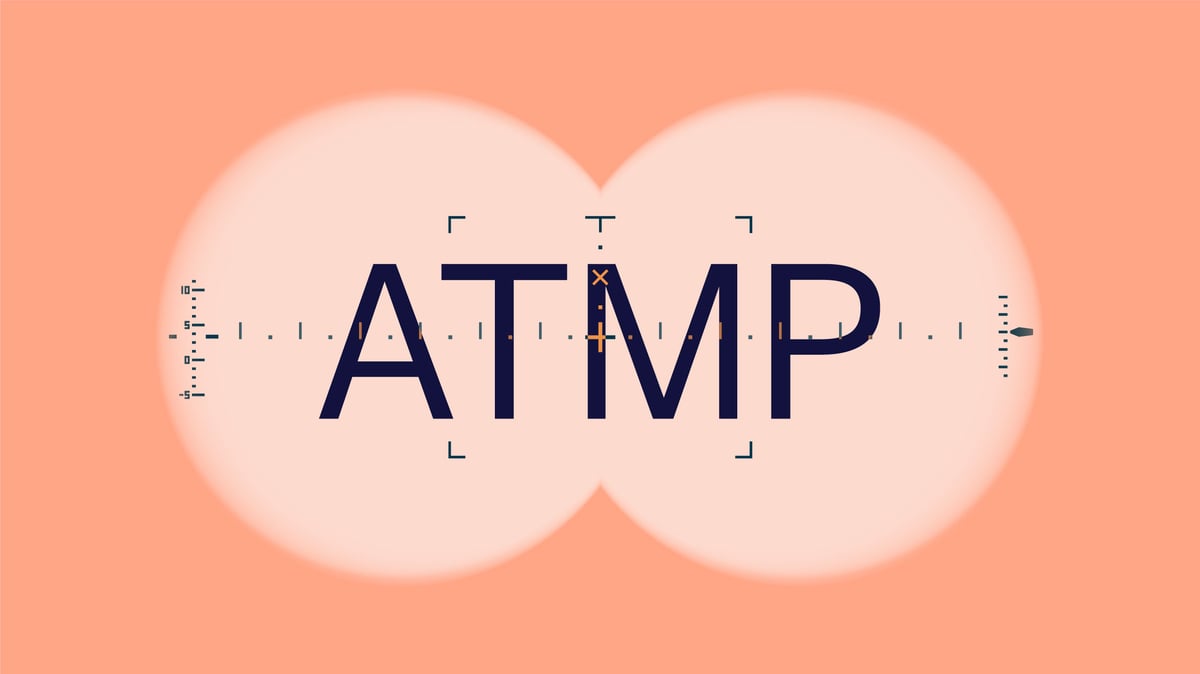What Are ATMPs?
ATMPs is an acronym for Advanced Therapy Medicinal Products. These medicinal products are based on genes, tissues, or cells. Research shows that ATMPs provide promising therapeutic applications for Alzheimer's disease, cancer, muscular dystrophy, and more.
Owing to the complexity involved in making ATMPs and their biological origin, these products need to meet the regulatory framework for biological medicines.
Challenges in Commercializing ATMPs
Life Sciences companies need to submit dossiers containing administrative, quality, nonclinical, and clinical data. The clinical data for filing ATMPs must include preclinical and three-phase clinical trial data. To compensate for the lengthy dossier filing process, regulatory agencies for the EU and USA offer expedited review programs for ATMPs.
Common ATMP Terms in the EU and USA Market
The first step to understanding the legal framework for ATMPs is to understand the terms used in the legal frameworks. The terminology used in the EU and US are as follows:
EU Common Terminology
|
USA Common Terminology
|
Commonly referred to as ATMPs
|
Commonly referred to as Cell Gene Therapies (CGT)
|
| An ATMP that integrates medical devices is termed a combined therapy (cATMP) |
Combination products include products with two or more regulated components, i.e., drug/device, biologic/device, drug/biologic, or drug/device/biologic.
|
| |
Regenerative medicine therapy is defined as
i) a cell therapy, therapeutic tissue-engineering product, human cell and tissue product, or any combination product using such therapies or products, explicitly excluding HCT/Ps;
ii) that is intended to treat, modify, reverse, or cure a serious or life-threatening disease or condition;
iii) and if the preliminary clinical evidence indicates that the drug has the potential to address unmet medical needs for such disease or condition.
|
ATMPs Classification in the EU and USA
The ATMPs follow the legal framework for biological medicinal products in European and American markets. The classification of the biological medicinal products can be as follows:
-
- Gene Therapy Medicinal Products (GTMPs)
- Tissue Engineered Products (TEPs)
- Cell-Based Therapy Medicinal Products (CTMPs)
The inclusion and exclusion criteria for sub-classification of ATMPs differs in the EU and USA as follows:
EU Subclassification for ATMPs
|
USA Subclassification for ATMPs
|
|
Inclusions:
-
- Cancer vaccines
- Cellular immunotherapies
- Other types of autologous and allogeneic cells therapies
- Xenogeneic living cells
- Stem cells and derived products
- Genetically modified cells
Exclusions:
-
- Products exclusively containing non-viable cells or tissue that do not produce pharmacological, immunological, or metabolic action
Inclusions:
-
- Plasmids DNA
- Viral vectors
- Genetically engineered microorganisms
- Human gene editing technology
- Patient-derived cellular gene therapy products
Exclusions:
-
- Non-biological products (e.g., chemically synthesized nucleic acids)
- Vaccines against infectious diseases
- Tissue Engineered Therapies
Inclusions:
-
- Products containing animal cells or tissues
- Products may also contain additional substances, such as cellular products, bio-molecules, biomaterials, chemical substances, scaffolds, or matrices
- Products for cartilage or cardiac defects, among others
- Stem cells and derived products
Exclusions
-
- Products exclusively containing non-viable cells or tissue with no pharmacological, immunological, or metabolic action
|
Inclusions:
-
- Cancer vaccine
- Cellular immunotherapies
- Other types of autologous and allogeneic cells
- Xenogeneic living cells
- Stem cells and derived products
- Genetically modified cells
Exclusions:
-
- HCT/Ps under PHSA Section 361
Inclusions:
-
- Plasmid DNA
- Viral vectors
- Genetically engineered microorganisms
- Human gene-editing technology
- Patient-derived cellular gene therapy products
Exclusions:
-
- Non-biological products (e.g., chemically synthesized nucleic acids)
-
- Products destined for the treatment or prophylaxis of infectious diseases
|
ATMPs Important Legislative Authorities in the EU and USA
The key legislative authorities in the EU and USA markets are as follows:
EU Authorities
|
USA Authorities
|
- The competent national authority of each member state is responsible for clinical trials
- The Committee for Medicinal Products for Human Use (CHMP) is responsible for producing positive opinion
- Comittee for Advanced Therapies (CAT) is responsible for the draft opinion
|
|
ATMPs Important Legislation in the EU and USA
The most important legislations that define the approval pathway in the EU and USA markets are as follows:
EU Important Legislation
|
USA Important Legislation
|
- Directive 2001/83/EC for medicinal products in human use
- Directive 2009/120/EC for advanced therapy medicinal products
- Regulation 726/2004/EC community procedures for the authorization and supervision of medicinal products for human and veterinary use and establishing a European medical agency
- Regulation 1394/2007/EC and Regulation (EC) No 726/2004
|
- Section 351 of PHSA and FDCA
- Title 21 CFR 600-680 Regulation on biologics
- 21 CFR 1271 to prevent the spread of infectious diseases
- RMAT Designation: Section 3033 of the 21st Century Cures Act (21 USC 356 [g](8)
|
ATMPs Special Provisions in the EU and USA Markets
Special provisions that define fast-track approval and an expedited review process in the EU and USA are as follows:
EU Special Provisions
|
USA Special Provisions
|
- Priority Medicine Designation Scheme
- Designed for medicines that target an unmet medical need.
- Accelerated assessment, conditional approval, and scientific advice.
- Initiate early dialogue between the European Medicines Agency and the therapy developer.
- Grant accelerated treatment.
- Application review time reduced from 210 days to 150 days.
- Conditional Marketing Authorization
- Designed for medicinal products with promising yet incomplete efficacy data are granted conditional market authorization, provided they will be further evaluated while on the market.
- Authorization Under Exceptional Circumstances
- Applicable to therapies for rare diseases with difficult-to-measure clinical endpoints.
- Granted on the condition that the applicant agrees to continuously monitor safety data and report any product incidents to the competent authority.
- The license is valid for five years with annual reassessment.
- Generally, products licensed under this program have an ‘Orphan Drug’ designation.
- Orphan Designation
- Compassionate Use
- Hospital Exemption
|
- Fast Track Designation (FTD)
- This program was developed to expedite the development and review process of medicines intended for severe or life-threatening conditions where clinical or nonclinical data indicate these medicines address an unmet medical need.
- Potentially eligible for Accelerated Approval and Priority Review.
- Developers are permitted to market their products while continuing to conduct confirmatory studies to obtain full marketing approval.
- A priority review reduces the therapy approval process from ten months to just six months.
- Breakthrough Therapy Designation (BTD)
- Expedited development and review process for ATMPs designed to treat severe life-threatening conditions with at least one clinically significant endpoint over currently available medicines.
- Eligible for priority review and accelerated approval.
- The Cures Act has established an expedited product development program called the ‘Regenerative Medicine Advanced Therapy (RMAT) Program.’
- The RMAT designation offers an option for expedited evaluation of the product.
- If the biological component provides the primary mode of action, a combination product can also be eligible for RMAT designation.
|
Conclusion
Overall, both the European and American regulatory agencies are taking encouraging initiatives to develop emerging trends in the field of ATMPs. Thankfully, the existing legal framework in both regions has defined various ATMP terminologies and their classification and sub-classification systems to clarify the dossier filing process for life sciences companies. In addition, the approval pathways for ATMPs provide an option for an expedited review, depending on therapeutic activity. While there are indeed some procedural differences between the USA and Europe, the final objective of both territories is to promote ATMPs to address unmet medicinal needs.
Stay compliant while ensuring affordable and safe ATMP medicines.
Discover Scilife for Advanced Therapy Medicinal Products (ATMPs)!



